Project details: Japanese Knotweed (impacted area circa 50m2) and bamboo (impacted area circa 70m2)
Client: Private Landlord
Type of property: Residential property
The Challenge
After working on a client project for two years, a change in circumstances forced a rethink of the approach outlined in the Japanese knotweed management plan. The methodology in the plan involved herbicide treatment of knotweed present. However, when PBA Solutions visited in 2022 to evaluate effectiveness, it emerged that fly tipping had taken place in the treatment area. This meant that herbicide treatment was no longer viable because knotweed was being suppressed by refuse. Pressure was now mounting from next door over their concern for a neighbour with Japanese knotweed, bamboo that was spreading and fly-tipped refuse that might continue to accumulate.
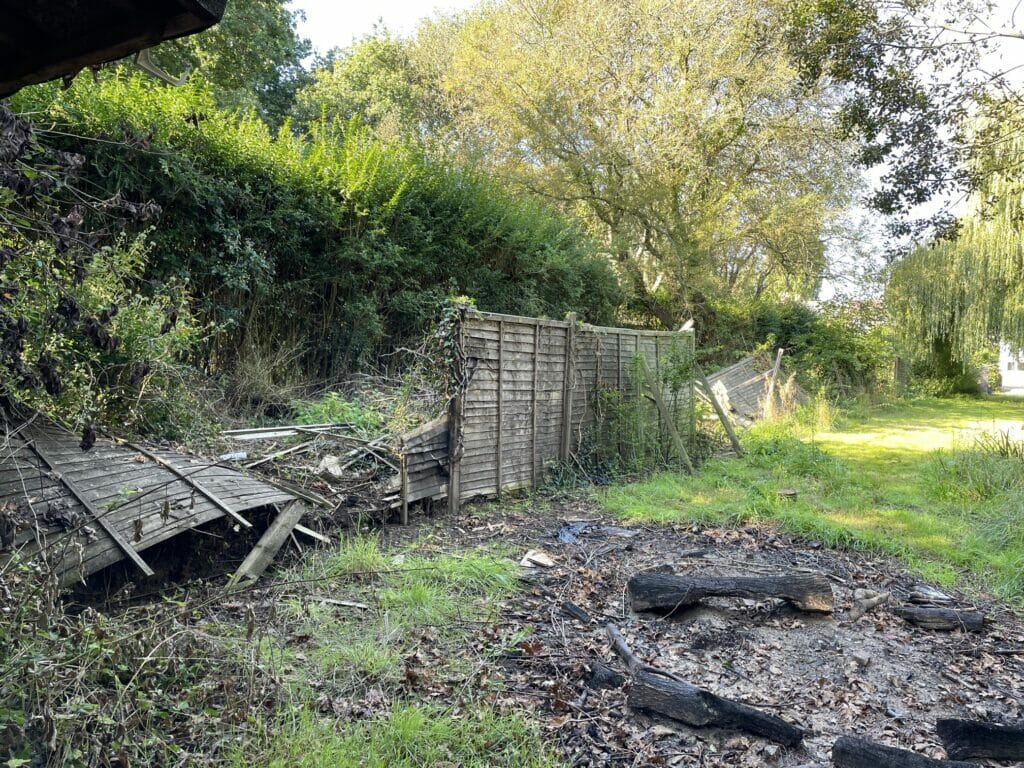
Broken fencing contributed to the garden issues and untidy appearance
Concern was not limited to the fly-tipped waste and Japanese knotweed, bamboo was also present – growing in the middle of the garden. The bamboo had reached a height of 5 metres in places, and covered an area the size of a double garage. Both the knotweed and bamboo had spread to the neighbouring garden and was now placing a strain on neighbour relations.
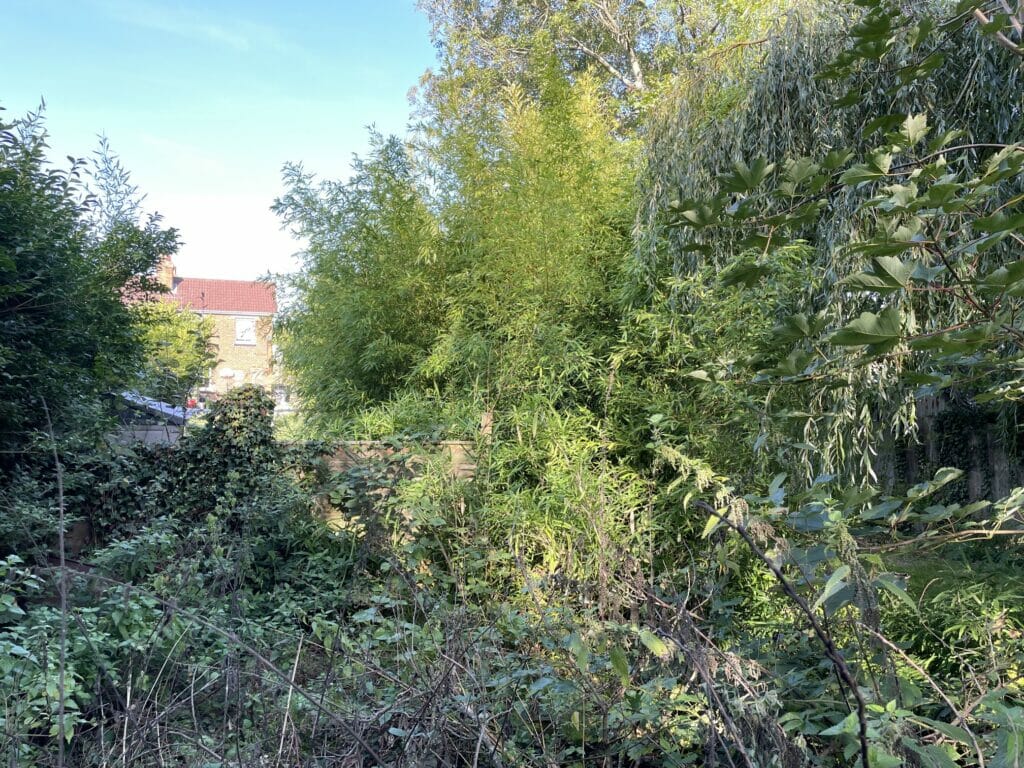
Large stand of bamboo centre of picture
Taking into account the bamboo present, 60% of the garden space was unusable due to fly tipping, invasive weeds and other vegetation, such as brambles. It was decided that because a number of factors had snowballed, making herbicide treatment unpractical, a more immediate solution was required that still took into account the client’s want for an affordable resolution. The only realistic solution would require the sorting and removal of the fly-tipped waste, cutting back of the vegetation, and digging out both the knotweed and bamboo.
Addressing the problem
The primary objective of this project was to remove the threat of Japanese knotweed, bamboo, and the hazardous waste, for the benefit of both the client and the neighbour. In addition, the gardens needed to be made usable again, but at an affordable cost.
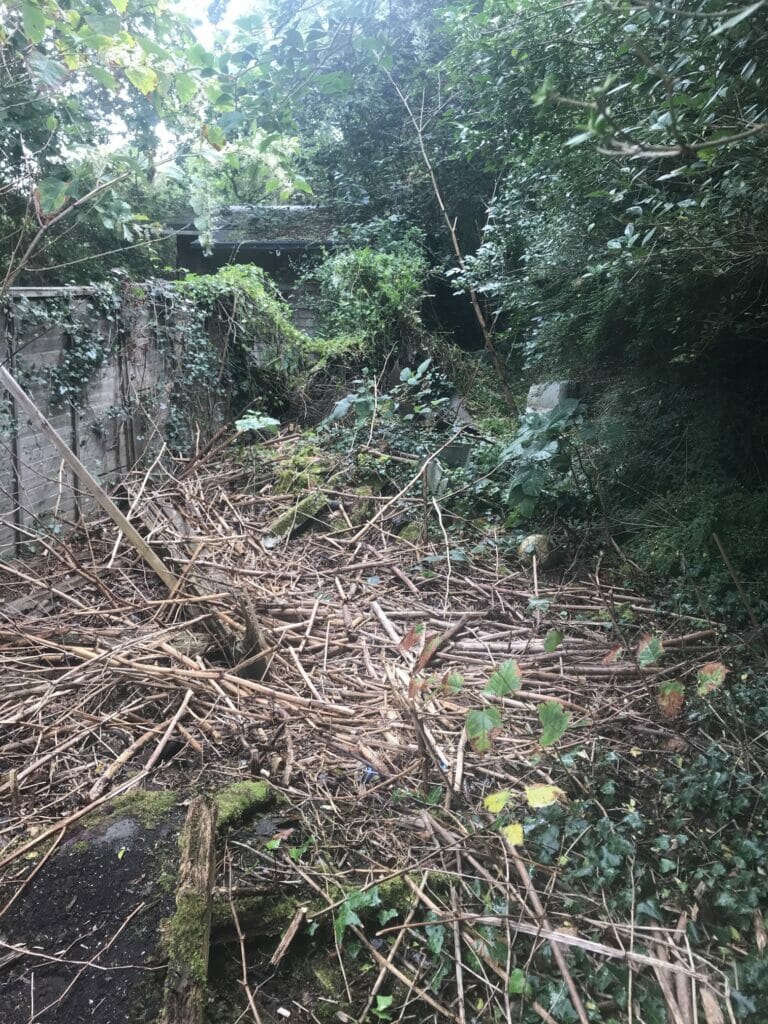
An accumulation of broken knotweed canes from prior seasons
PBA worked closely with all parties to maintain cordial relations and keep the project moving at pace. Careful consideration was given to all of the projects requirements, and an affordable knotweed removal solution was proposed, which would remove the invasive species present. Most importantly it would include remediation that would enable everyone to safely use and enjoy their gardens again.
The proposed solution involved a reduced excavation dig combined with the installation of root barrier, which enabled the project to fit the budget by sending less waste to landfill. The excavation project was scheduled for 12 days in the spring of 2023.
Executing the plan
The Japanese knotweed and bamboo were located at the end of a narrow rear garden with a vehicle access track. However, the track was narrow, with trees that prevented the team from gaining direct access with excavators and dumper trucks.
The good planning, communication and collaboration in the early stages of the project resulted in access being gained via the neighbouring property. This allowed the team to create the required access strip to allow easier removal of waste material and delivery of the root barrier materials.
Waste removal
Carpets, bricks, electrical goods and various other waste items had been deposited in the knotweed location. PBA Solutions’ first task was therefore to segregate the refuse into waste streams. Mixed waste was placed into skips, green waste was loaded into caged tippers and the POPs (persistent organic pollutant) which comprised of electrical and white goods, were set aside to be dealt with separately. It was necessary for the team to sort and remove this waste both by hand and using diggers and dumpers, before the knotweed and bamboo could be removed from site.
Invasive plant removal
Next to be removed were the invasive and encroaching plants; the knotweed, bamboo, brambles and other weeds. As access was gained via the neighbouring property, the access route was sheeted with polythene and boarded out using tack mats. Part of the biosecurity measures put in place to avoid spreading invasive plant material. The waste was then driven off the site, loaded into grab lorries and sent away for safe disposal.
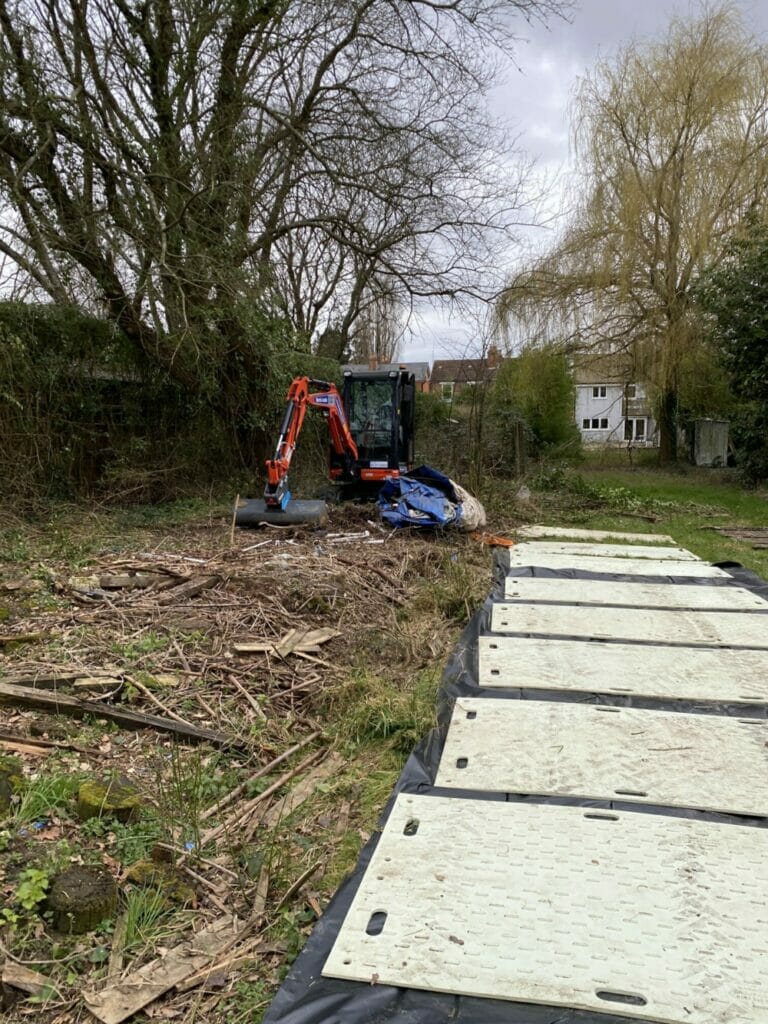
Track mat pathways underlayed with polythene
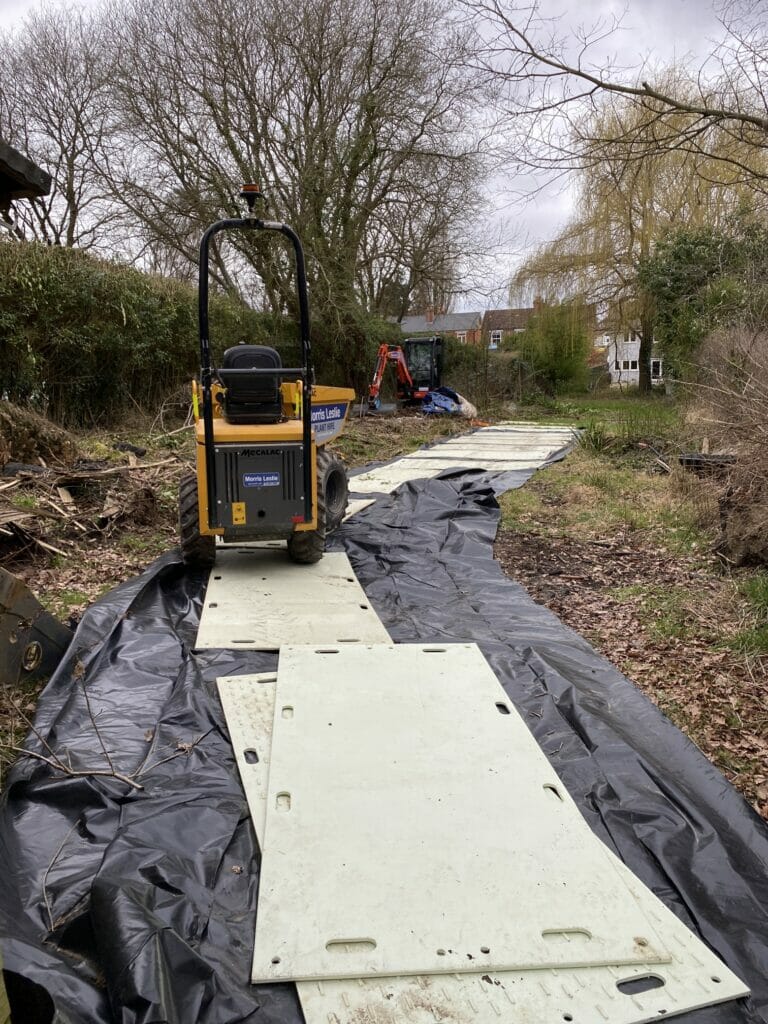
Access for diggers and dumpers with biosecurity measures
Excavation
A reduced dig excavation of the bamboo and Japanese knotweed was agreed, to meet the project budget and meet other client needs. The knotweed-impacted land was excavated to 0.5 metres, with any remaining knotweed rhizome chased out to a deeper depth.
Machinery selected
A 2.5-tonne mini digger and 1-tonne dumper were used to excavate the site, and remove the contaminated soil. Roots were then marked out to enable the team to chase out any remaining rhizome for removal from site.
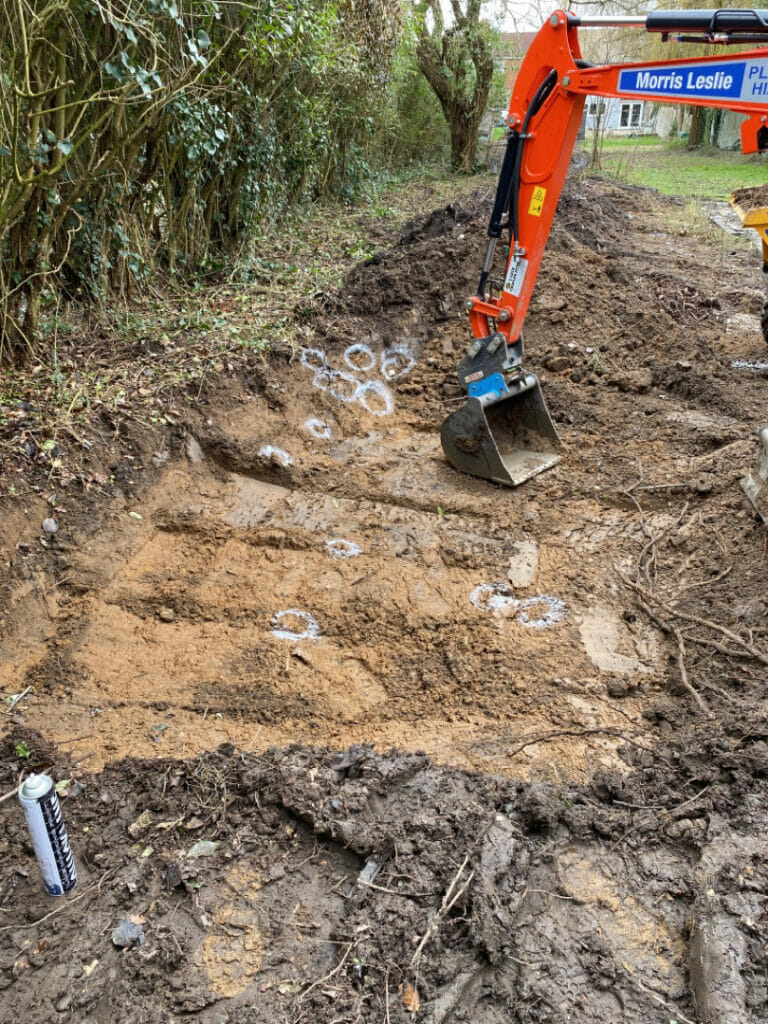
Excavation depth achieved, the mark-up process begins
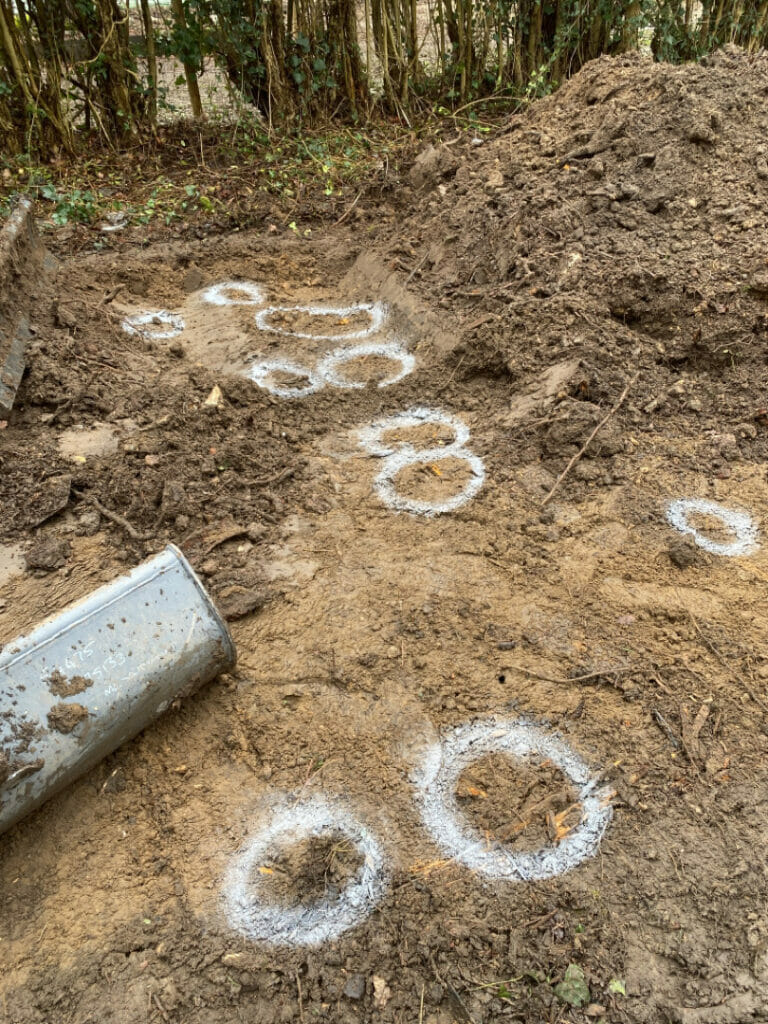
Remaining knotweed rhizome marked-up to be chased out
A temporary storage area for waste material was created using polythene sheeting and boards. This was used to hold contaminated waste ready for grab lorry collection to be taken away to a licensed landfill.
Root barrier prevention measures
Once all of the waste was removed from site, the team carried out checks to ensure that no traces of bamboo or knotweed remained. As an additional safeguarding measure, CuTex permeable root barrier was installed, a brand scientifically tested against Japanese knotweed.
Using root barrier is a cost-effective and environmentally friendly knotweed removal strategy, as it results in a lower volume of knotweed-impacted waste being removed. As a result less material goes to landfill and less clean soil (free of contamination) is required for remediation.
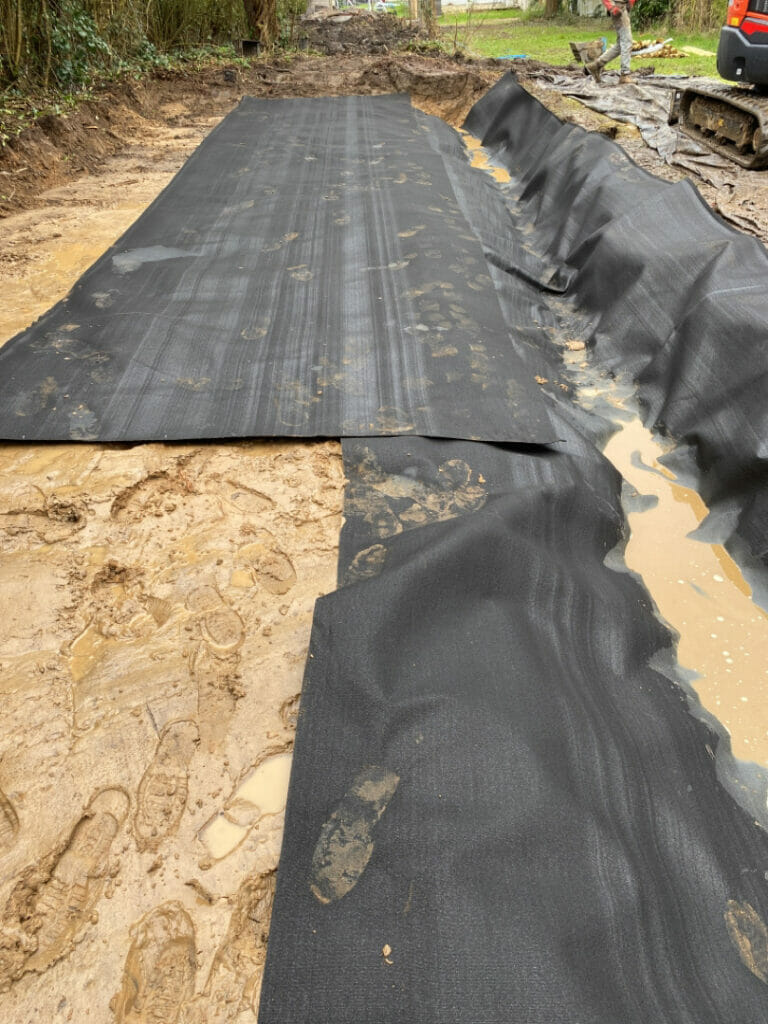
CuTex permeable root barrier being installed horizontally
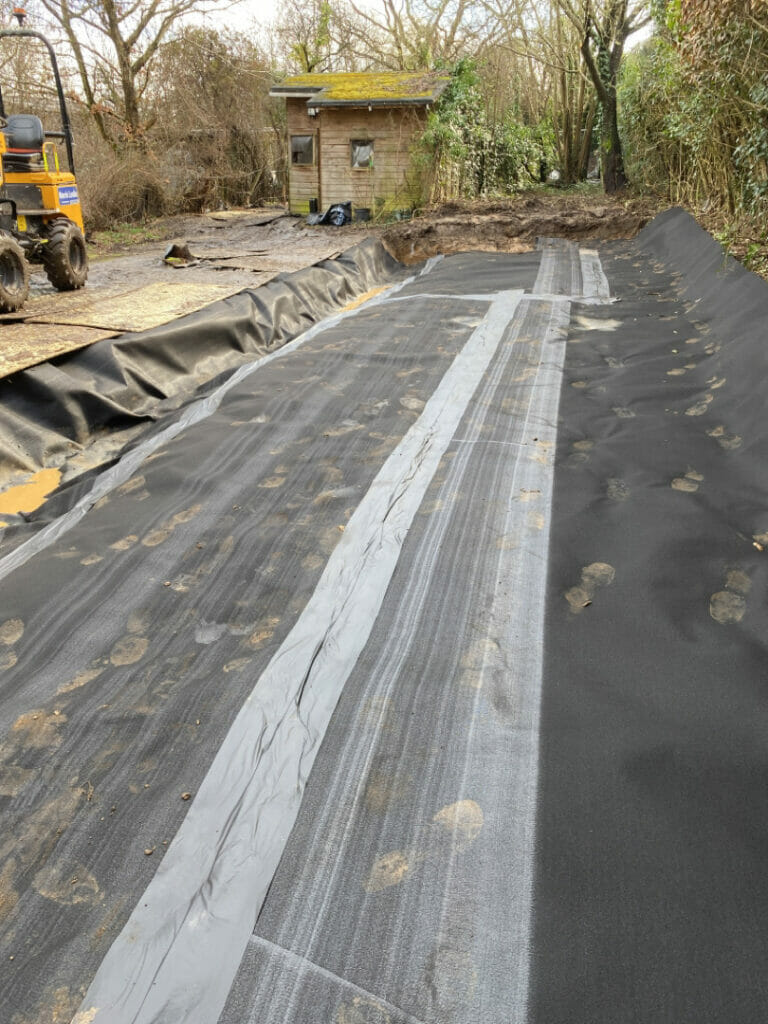
Sheets of CuTex root barrier secured together using joining tape
CuTex root barrier was selected by PBA for this project, not only because it is permeable barrier, but also because of the ability to use it both vertically and horizontally. These properties allowed the creation of a tray-like structure to be created from CuTex in the knotweed excavation area. This structure was made as a receptacle of the new ‘clean’ soil, and could also block any viable plant fragments should they remain.
Remediation
To complete the project, and make the space usable again, work was completed to grade and level the space and new ‘knotweed-free’ soil was imported. Grass seed was then sown to revegetate the land where the knotweed was once growing, and a fence was erected to delineate boundary lines and secure the site.
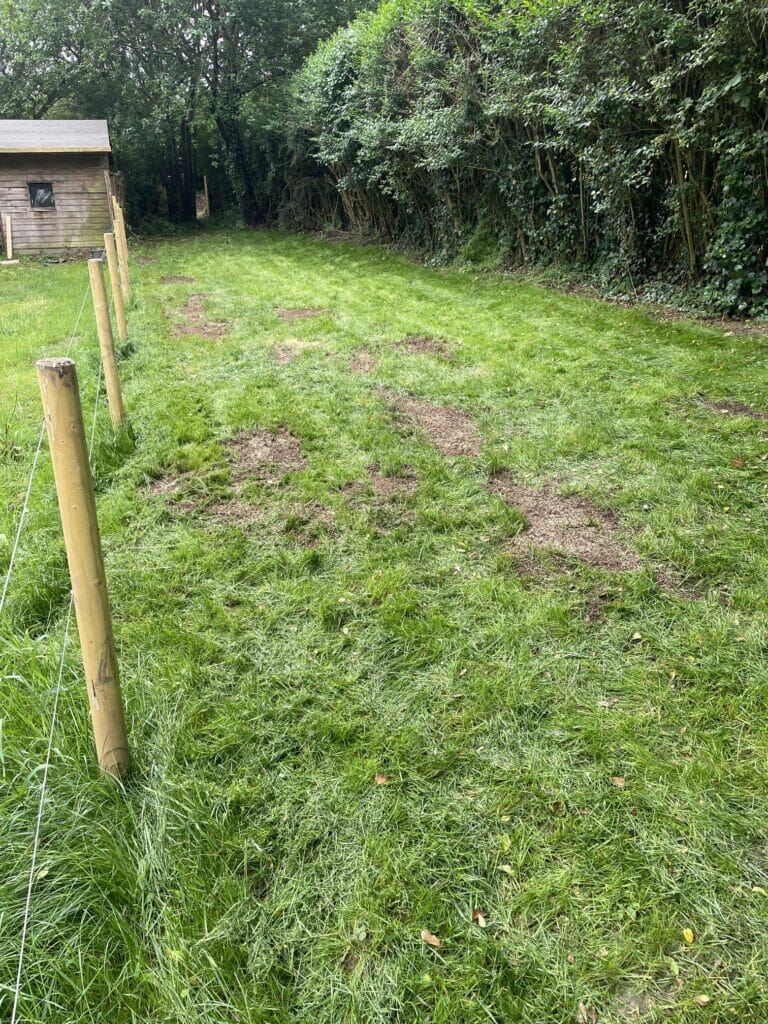
The reinstated garden, with newly erected fence for additional security
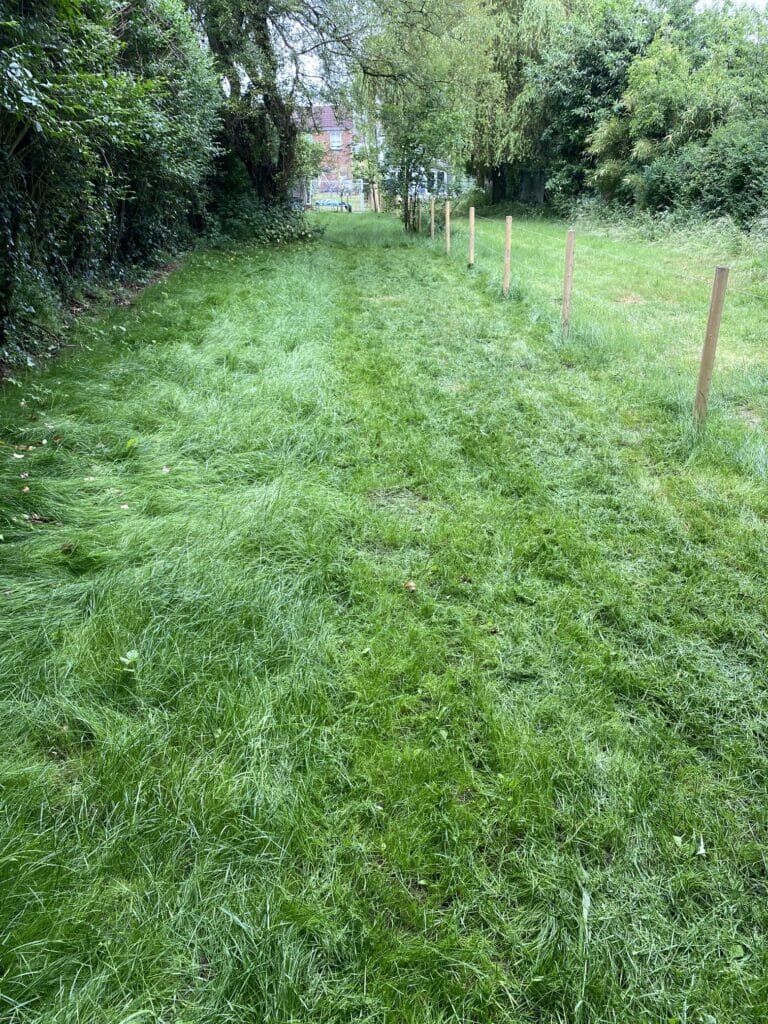
Free of Japanese knotweed and bamboo 3 months after completion
Long term project management
The long-term Japanese knotweed management plan for the project involves regular site inspections to check for the regrowth of bamboo and knotweed. It’s anticipated that by 2027, no bamboo or knotweed will have been seen growing for two or more years.
All properties impacted by the knotweed will be monitored to ensure any new growth, should it appear, is allowed to become established.
Conclusion
Turning an unusable Japanese knotweed, bamboo and waste laid area back into a usable garden requires planning, stakeholder buy-in and cooperation from all parties involved. In this case, the project instigator was the neighbour who encouraged a landlord to deal with their neglected garden.
This resulted in PBA coming up with a knotweed and bamboo removal solution that would satisfy the budget requirements of the landlord/subject property owner. This project is a great example of one that required the expertise of an invasive weed specialist, but would have been challenging to complete without cooperation between neighbours, clients, and contractors.
With nearly 150m2 of fly tipped or overgrown garden, the client had no idea where to start. Concerns over the budget, and access complexities, adding to the problem. PBA Solutions were able to rationalise the project and define a scope, to set a budget of £26K.
With the neighbours on board, and a willing client, PBA were able to rescue this garden from Japanese knotweed and bamboo. The budget was met and included the revegetation works to return the area to its former glory. A meadow garden reinstated with additional fencing completed at the end, to secure the garden as an additional prevention measure.

